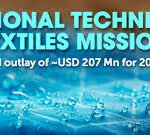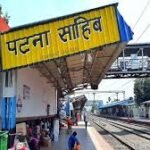Mizoram Pioneers Property Card Distribution in Northeast
Introduction: Mizoram’s Groundbreaking Initiative
Mizoram has achieved a significant milestone by becoming the first state in the northeastern region to launch the distribution of property cards under the central government’s SVAMITVA scheme. The launch of this scheme has brought the state into the spotlight as it strives to provide legal ownership of properties to its residents, empowering them with rights over their land. This initiative is expected to bring transformative changes to rural areas and boost economic growth.
What is the SVAMITVA Scheme?
SVAMITVA, or Survey of Villages and Mapping with Improvised Technology in Village Areas, is a central government initiative aimed at providing record of rights to rural households across the country. The scheme, launched in 2020 by the Ministry of Panchayati Raj, seeks to survey rural properties, issue property cards, and establish clear land titles. By offering these rights to rural families, the initiative helps in securing loans, preventing disputes, and creating a transparent record of ownership.
How Mizoram is Leading the Way
Mizoram’s unique role in this scheme stands out as the state is the first in the Northeast to distribute property cards. The distribution process began with the formal handover of property cards to selected beneficiaries in Aizawl, the capital city. This step aligns with the broader goal of ensuring secure land tenure and improving socio-economic conditions in rural areas. Mizoram’s leadership will likely inspire other states in the Northeast to follow suit.
Impact on Rural Development
The property card distribution is expected to have a lasting impact on Mizoram’s rural communities. It will foster economic growth by allowing landowners to use their land as collateral for loans, thus enhancing access to financial resources. This is a crucial step in the financial inclusion of rural populations. Moreover, by reducing land disputes, the initiative will improve the overall living conditions and contribute to social stability.

Why This News is Important
Empowerment of Rural Populations
Mizoram’s pioneering move in implementing the SVAMITVA scheme directly impacts the empowerment of rural residents. By ensuring that people in rural areas have legal titles to their land, this initiative ensures they are not only recognized by law but also gain access to financial resources that were previously unavailable due to a lack of formal land titles. This can potentially change the economic landscape for many families, lifting them out of poverty and giving them the opportunity to improve their livelihoods.
Boost to Financial Inclusion
With formal property ownership comes the ability to secure loans and financial services. The property cards provide a legal document that rural landowners can use to apply for loans from banks and financial institutions. This marks a crucial step towards improving financial inclusion, allowing people in Mizoram’s rural areas to engage with the banking sector and start or expand businesses, thereby contributing to the state’s overall economic development.
Reduction in Land Disputes
One of the key benefits of the SVAMITVA scheme is its role in resolving land disputes. In many rural areas, ownership claims are often contested due to the lack of clear documentation. With the issuance of property cards, landowners now have recognized proof of ownership, helping to resolve conflicts and ensure that land transactions are legally binding. This not only reduces tensions within communities but also fosters a peaceful environment for growth and development.
Catalyst for Development Projects
The distribution of property cards can serve as a catalyst for broader development projects in rural areas. With official land titles, individuals can confidently engage in activities such as property improvement, construction, and commercial ventures. This would improve the overall infrastructure and attract investments to rural areas, stimulating growth in sectors such as agriculture, education, and healthcare.
A Step Towards Nationwide Implementation
Mizoram’s role as the first state in the Northeast to distribute property cards under the SVAMITVA scheme could set a model for other states to follow. The success of the scheme in Mizoram can encourage similar initiatives in other northeastern states, ensuring that the benefits of land formalization and secure land ownership are extended across the region. This could help bridge the gap between urban and rural areas in terms of economic development and access to opportunities.
Historical Context
Background of the SVAMITVA Scheme
The SVAMITVA scheme was launched by the Government of India in 2020 under the Ministry of Panchayati Raj. The primary aim of the scheme is to provide rural households with a record of their land ownership through the issuance of property cards. The initiative is part of the broader vision of the government to improve the land management system and ensure that rural populations have secure land rights. By employing advanced technology such as drone mapping and Geographic Information System (GIS), the government aims to create an accurate and up-to-date land record.
Challenges in Land Ownership in Rural India
In rural areas of India, the lack of proper land records has led to a number of issues, including land disputes, illegal land transactions, and obstacles to obtaining loans. This has hindered the socio-economic development of rural populations. The SVAMITVA scheme seeks to address these issues by creating accurate records, ensuring that each landowner is recognized legally, and eliminating conflicts that arise from ambiguous land titles.
Key Takeaways from Mizoram Pioneers Property Card Distribution in Northeast
| Serial No. | Key Takeaway |
|---|---|
| 1 | Mizoram is the first state in the Northeast to implement the SVAMITVA scheme, distributing property cards to rural households. |
| 2 | The SVAMITVA scheme aims to provide legal recognition of land ownership, improving access to loans and reducing land disputes. |
| 3 | The scheme empowers rural populations by enabling them to secure financial resources and improve their living conditions. |
| 4 | Mizoram’s pioneering role in the SVAMITVA scheme is expected to serve as a model for other northeastern states to follow. |
| 5 | The distribution of property cards marks a significant step in improving financial inclusion and rural development in Mizoram. |
Important FAQs for Students from this News
1. What is the SVAMITVA scheme?
- The SVAMITVA scheme (Survey of Villages and Mapping with Improvised Technology in Village Areas) is an initiative by the Government of India aimed at providing rural households with legal titles for their properties. It uses technology like drone mapping to create accurate records and helps in formalizing land ownership.
2. Why is Mizoram’s implementation of the SVAMITVA scheme significant?
- Mizoram is the first state in the northeastern region to implement the SVAMITVA scheme and distribute property cards. This initiative will help empower rural landowners with legal rights, improve financial inclusion, and reduce land disputes.
3. How does the SVAMITVA scheme benefit rural communities?
- The scheme provides rural households with a legal record of land ownership, enabling them to access financial resources like loans. It also reduces disputes related to land ownership and promotes social stability and economic development.
4. What is the role of technology in the SVAMITVA scheme?
- The SVAMITVA scheme utilizes modern technology such as drone surveys and Geographic Information System (GIS) mapping to accurately survey rural properties and create land records. This helps in minimizing errors and ensuring transparency in land ownership.
5. Can the property card issued under the SVAMITVA scheme be used to secure loans?
- Yes, the property card acts as legal proof of ownership, which allows landowners to use their land as collateral to apply for loans from banks and financial institutions, improving access to financial services in rural areas.
Some Important Current Affairs Links



















 Exciting News!
Exciting News!  Join Our Telegram Channel Now!
Join Our Telegram Channel Now!
 Join our Telegram channel for a thrilling adventure into the world of daily current affairs.
Join our Telegram channel for a thrilling adventure into the world of daily current affairs. 
 Don’t miss out on the latest updates and insights! Click to join now and be part of the knowledge revolution!
Don’t miss out on the latest updates and insights! Click to join now and be part of the knowledge revolution! 
